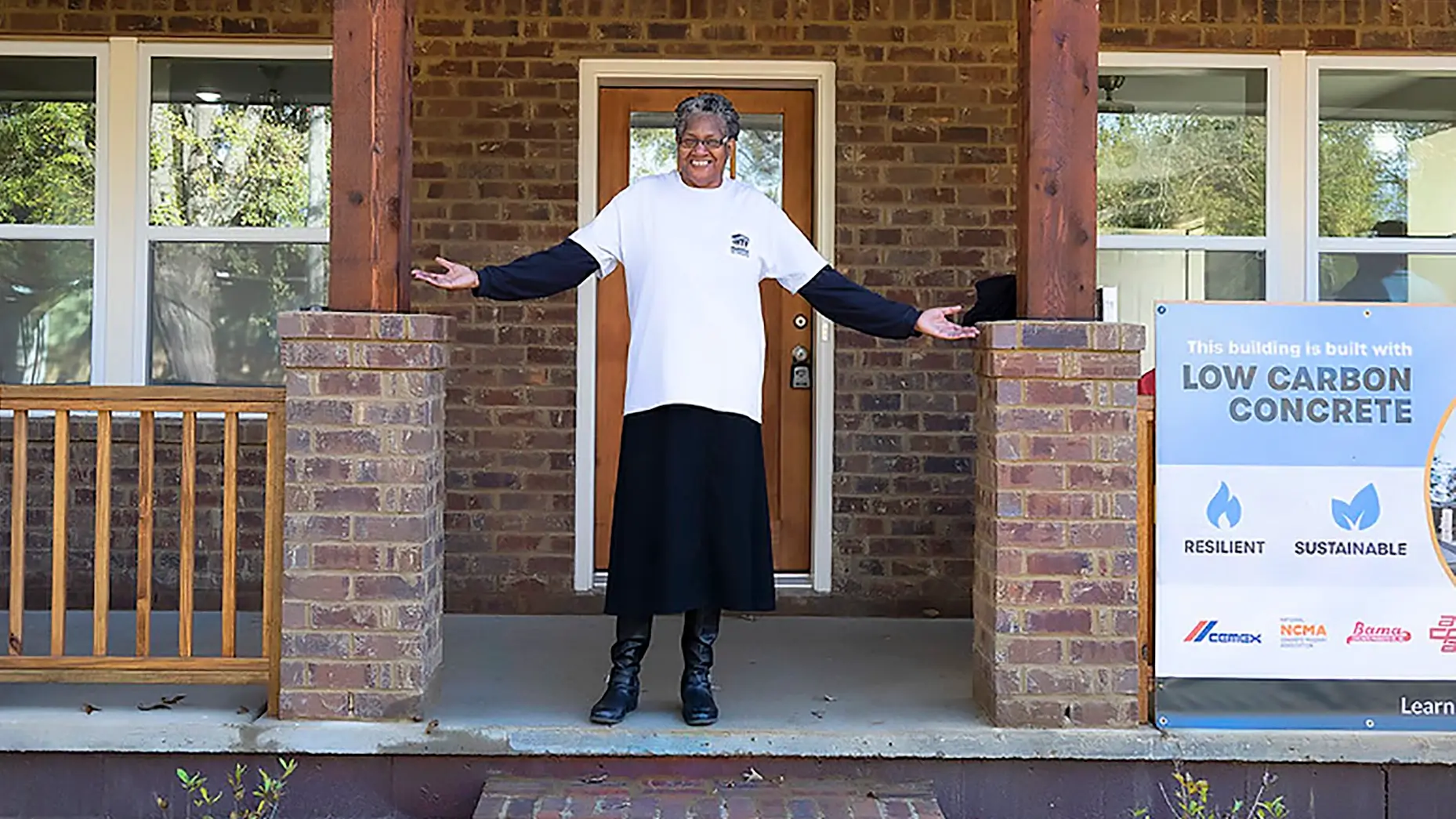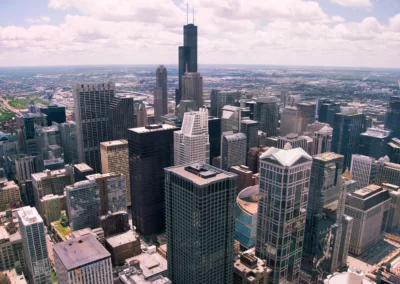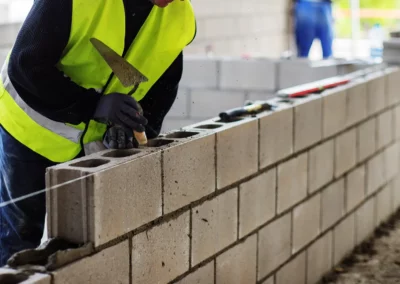When the Big Bad Wolf threatens to huff and puff and blow your house down, this gold-level FORTIFIED low carbon concrete home will protect you.
When Lorraine Davis received the keys to her new Tuscaloosa, Alabama, home in November 2021, she knew it wasn’t just any home.
Lorraine’s new home would not only replace the one she saw destroyed by a tornado but it would also be the first-ever concrete block home built by Habitat for Humanity.
Even better? It’s the first home to use low carbon concrete products.
And our CarbonBuilt co-workers became part of an even greater team, including Build With Strength, Habitat for Humanity Tuscaloosa, the Alabama Concrete Industries Association, CEMEX USA and the National Concrete Masonry Association.
Volunteers from Mercedes Benz USA constructed the home alongside concrete and masonry specialists.
This story of climate resilience — and human perseverance — began more than a decade ago when Tuscaloosa was ravaged by tornadoes.
In fact, many parts of the state continue to be impacted by climate-driven weather events — and this backdrop is critical to understanding why this home is not just a home.
It’s also a microcosm of what’s possible when you align priorities, build coalitions and innovate.
Building Industry Job Creation:
This low carbon concrete home is one of 40 planned homes in the area, part of Habitat’s “Operation Transformation” initiative which provides job training for high school students seeking a construction trade in partnership with the Tuscaloosa Career and Technology Academy.
Climate Resilient Communities:
In an era of increasingly frequent and higher intensity disasters, this low carbon concrete home built with FORTIFIED construction methods will stand out for its resiliency and safety — and protect Lorraine and her family for years to come.
Sustainable Building Materials:
The concrete blocks for this home were produced by diverting CO2 emissions from a coal-fired power plant at the National Carbon Capture Center into the “curing” chamber – the final stage of block production.
When the emissions were “fed” into our new, low carbon concrete mix, the result was concrete blocks containing substantially less embodied carbon.
The atmospheric CO2 trapped in these low-carbon concrete products will now remain trapped in Lorraine’s home for millennia.
The Power of Community:
From the partnerships related to job training, the coalition of concrete and masonry providers, the volunteer builders from Mercedes Benz and the pantry stocked full of food courtesy of First Presbyterian Church, this project shows the power of community.
We were honored, humbled and inspired by our participation in this effort — and you can read more about it in this Tuscaloosa Thread article.




